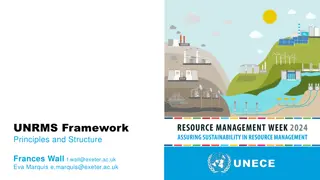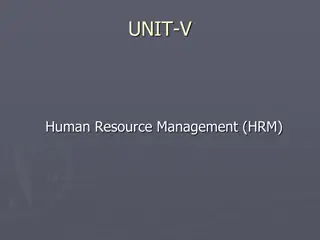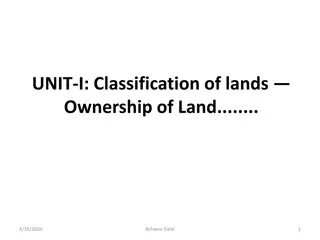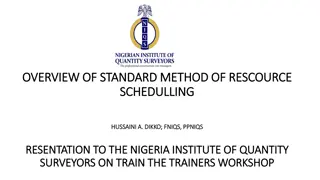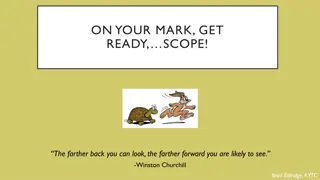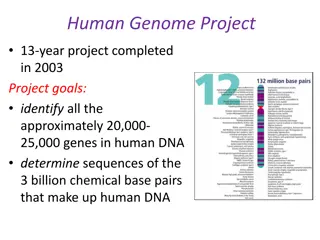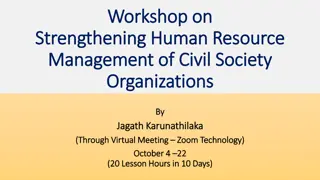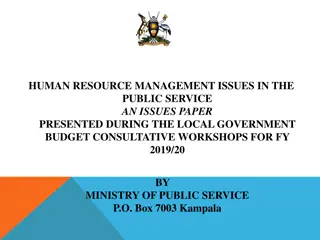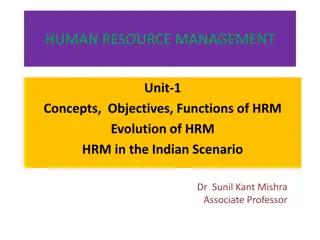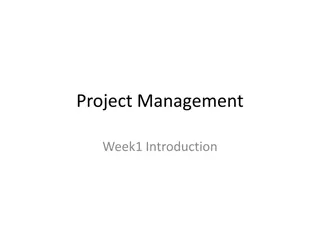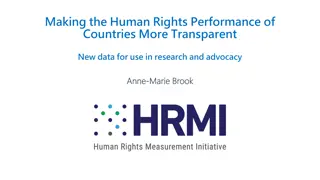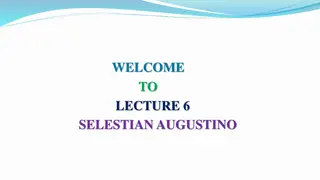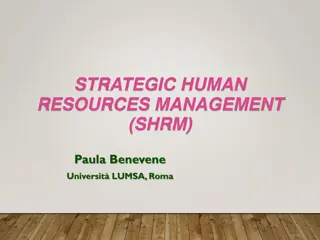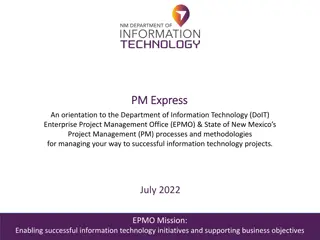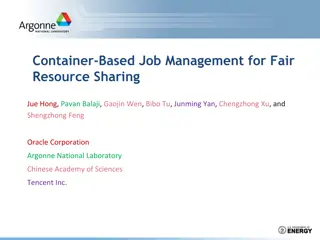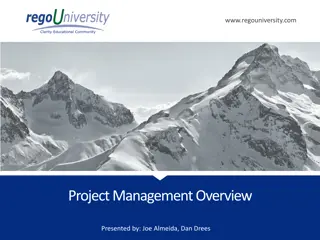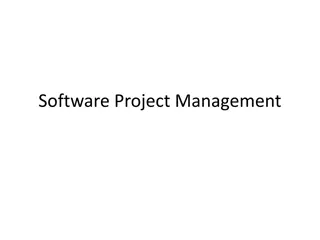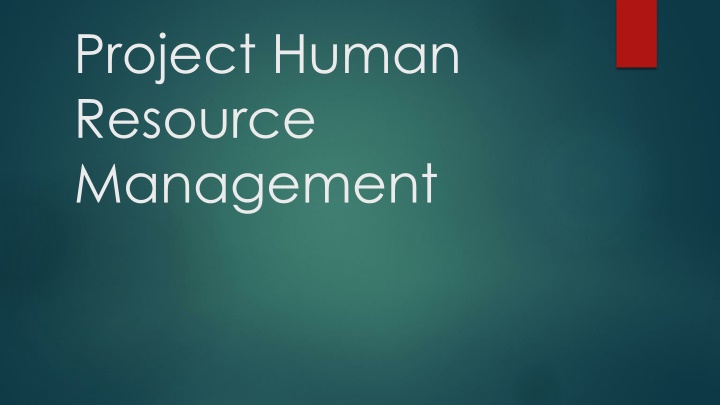
Effective Strategies for Project Team Management
Explore key tips for creating and managing a successful project team, including careful planning, creating a conducive work environment, motivation techniques, conflict resolution, and understanding motivation theories such as Maslow's Hierarchy of Needs and Herzberg's Motivation-Hygiene Theory.
Download Presentation

Please find below an Image/Link to download the presentation.
The content on the website is provided AS IS for your information and personal use only. It may not be sold, licensed, or shared on other websites without obtaining consent from the author. If you encounter any issues during the download, it is possible that the publisher has removed the file from their server.
You are allowed to download the files provided on this website for personal or commercial use, subject to the condition that they are used lawfully. All files are the property of their respective owners.
The content on the website is provided AS IS for your information and personal use only. It may not be sold, licensed, or shared on other websites without obtaining consent from the author.
E N D
Presentation Transcript
Project Human Resource Management
Keys to Having a Great Project Team Plan carefully Develop plans (e.g. Staffing Management Plan, Team Performance Assessments) Create a good working environment Pay attention to motivation Get the best people possible for the team Develop skills of the team Keep the team motivated Confront and resolve conflicts as they occur Compromise can be a lose/lose solution
Human Resource Management During the Life of the Project
Motivation Theories: Maslow s Hierarchy of Needs
Motivation Theories: Herzbergs Motivation-Hygiene Theory Distinguishes between motivational factors and hygiene factors Motivators create job satisfaction Hygiene factors can create job dissatisfaction
Motivation Theories: McClellands Acquired-Needs Theory Individual s needs are learned over time and shaped by life experiences Achievement High seek to excel Affiliation High desire good relationships with others Power High desire personal and/or institutional power Individual needs determine the best motivators for that person Example: Achievers should receive frequent feedback about performance (may include money)
Motivation Theories: McGregor s Theory X and Theory Y Theory X managers Classical systems theory assumptions Assumes workers dislike and avoid work so managers must use coercion, threats, and controlling behaviors Theory Y managers Human relations theory Assumes employees do not inherently dislike work, but consider it a natural part of life Best rewards are the satisfaction of esteem and self-actualization needs described by Maslow
Motivation Theories: Theory Z Addition to McGregor s theory Adds a different perspective that of how workers perceive management William Ouchi Different approach to managing people Based on Japanese paradigm of motivation Trust Quality Collective decision making Workers can be trusted to do their jobs as long as management can be trusted to support them and look out for their interests
Motivation Theory: Thamhain and Wilemon s Influence and Power Acknowledges that project managers often have staff assigned to them over whom they have no control Nine influence bases available to Project Managers Authority right to issue orders Assignment perceived ability to influence a worker s later assignments Budget perceived ability to authorize use of discretionary funds Promotion ability to improve worker s position Money ability to increase worker s pay and benefits Penalty perceived ability to dispense or cause punishment Work challenge ability to assign work worker s enjoy Expertise perceived special knowledge of project manager Friendship ability to establish friendly relationships between project manager and others Projects most successful when work challenge and expertise are used to influence people 1. 2. 3. 4. 5. 6. 7. 8. 9.
Motivation Theory: Covey and Improving Effectiveness Approach for helping people and teams be more effective Be proactive Managers should anticipate for and plan for problems and changes Begin with the end in mind Write a mission statement to help achieve focus on values and goals Put first things first Time management system and matrix to help people prioritize their time Think win/win Parties in potential conflicts should work together to find solutions that work for everyone Seek first to Understand, then to be Understood Empathetic listening promotes conversation 1. 2. 3. 4. 5. Ross believes this differentiates good from bad Project Managers Synergies create collaborative products that are better than a collection of individual efforts Sharpen the saw take time to renew yourself physically, spiritually, mentally, and socially to avoid burn-out 1. 6. 7.
Human Resource Plan Identifies and documents project roles, responsibilities, skills and reporting relationships Hierarchy chart Responsibility Assignment matrix (RAM) RACI charts (responsibilities, accountability, consultation, informed)
Acquire the Project Team Work with others in the organization to assign personnel to the team or acquire new people for the organization Requires a good Staffing Plan Resource loading Determines the amount of individual resources required during a specific time period in the schedule Resource Leveling Technique to resolve resource conflicts by delaying tasks A form of network analysis to result in smoother distribution of resource usage
Develop the Project Team Training Individual and team Provide in a just-in-time fashion (train for what is needed NOW) Team Building Exercises In-house or provided by external organizations Mental and/or physical exercises
Manage the Project Team Observation and conversation Manager needs to observe the team at work to assess how they are doing and talk to them about it Project performance Appraisals Even if Project Manager does not provide the official performance evaluation, s/he should provide timely feedback Interpersonal skills Leadership, influencing, decision-making Conflict management
Manage the Team: Conflict Management Confrontation mode project managers face the conflict directly using a problem-solving approach that allows parties to work through disagreements Compromise mode Project managers use a give-and-take approach to resolve conflicts Works best when the tasks and relationships are not of high importance Smoothing mode Project manager deemphasizes differences, emphasizes areas of agreement Forcing mode win/lose approach Withdrawal mode Project managers withdraw from actual or potential agreement. Avoiding. Least desirable mode. Collaborating mode Decision makers incorporate different viewpoints and insights to develop consensus Not all conflict is bad task-related conflict can improve team performance
Manage the Team: Characteristics of Dysfunctional Teams Lack trust Fear conflict Lack commitment Avoid accountability Do not pay attention to results
References Greene, J. & Stellman, A. (2007) Head First PMP, Beijing: O Reilly Schwalbe, K. (2014) Information Technology Project Management, 7thEdition, Cengage Learning


